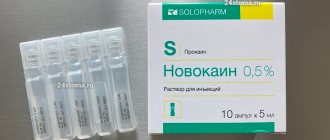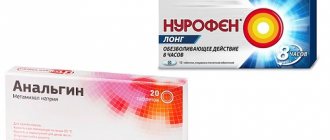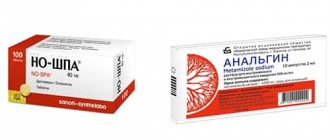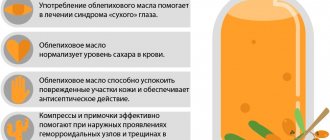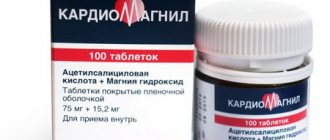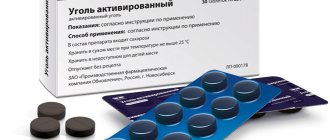Gastritis and ulcerative lesions of the digestive system are considered the scourge of modern society. It is difficult to find a person who has not experienced pain in the projection of the stomach at least several times. A mass examination using FGDS showed that in 80-90% of the population, minimal signs of inflammatory damage to the mucous membrane were identified.
This is due to: poor environmental situation, poor quality food, chronic stress, passive lifestyle, abuse of bad habits (alcohol, smoking). The main role is played by the presence in the lumen of the stomach of the bacterium Helicobacter pylori, which is responsible for the initiation of inflammatory changes.
You can fight the manifestations of the disease in different ways: change your lifestyle, adhere to the principles of proper nutrition, give up bad habits. But the basis of therapy for this pathology is the eradication of the pathogenic bacterium. Doctors prescribe pharmacological agents that help restore the structural components of the epithelium and normalize its function.
How to take Nolpaza and De-nol at the same time
De-Nol
An intestinal and astringent antiseptic mono drug based on bismuth tripotassium dicitrate with auxiliary components: magnesium stearate, corn starch, macrogol, potassium polyacrylate. They have bactericidal activity against Helicobacter pylori bacteria.
Bismuth salts are toxic substances. They began to be used back in the 15th century; they treated completely different diseases and pathologies, ranging from ordinary diarrhea to sexually transmitted infections.
In the second half of the 20th century, bismuth began to be used in the treatment of gastric ulcers and inflammatory processes of the gastrointestinal tract. Before starting to use drugs containing bismuth salts, you should read the instructions and adhere to a number of rules so as not to harm the body and not develop chronic bismuthosis.
Effect on the body
Nolpaza is a proton pump inhibitor. Its action is based on blocking the synthesis of hydrochloric acid in the final stage, reducing and stabilizing total acidity in the stomach, helping in the treatment of inflammatory processes in the digestive tract.
Pantoprazole in the drug reduces the release of acid within 60 - 100 minutes after administration, while achieving the maximum therapeutic effect. The substance does not affect the motility of the digestive process in the stomach and the intensity of intestinal motility.
Next, absorption occurs through the intestinal mucosa and metabolism in the liver. The drug is excreted in the urine, and the remainder is excreted in bile. The activity of gastric secretion will be restored three to four days after the last use of the tablet.
De-Nol is considered an antiseptic with astringent properties. Bismuth salts do not dissolve in the acidic gastric environment, but are deposited on the surface of the ulcer or inflammation and form compounds with the protein substrate, similar to a protective film. The walls of the stomach become resistant to the adverse effects of pepsin and hydrochloric acid.
Salts are almost not absorbed from the gastrointestinal tract, but are excreted along with feces. The remaining percentage of bismuth is excreted by the kidneys in the urine.
Comparison of addiction between Nolpaza and De-nol
Like safety, addiction also involves many factors that must be considered when evaluating a drug.
So, the totality of the values of such parameters as “o syndrome” in Nolpaza is quite similar to the similar values in De-nol. Withdrawal syndrome is a pathological condition that occurs after the cessation of intake of addictive or dependent substances into the body. And resistance is understood as initial immunity to a drug; in this it differs from addiction, when immunity to a drug develops over a certain period of time. The presence of resistance can only be stated if an attempt has been made to increase the dose of the drug to the maximum possible. At the same time, in Nolpaza the meaning of the “syndrome” is quite small, however, the same as in De-nol.
Prescription of drugs
De-Nol is prescribed when a patient has:
- ulcers in the stomach, duodenum;
- irritable bowel syndrome, which is accompanied by loose stools;
- dyspepsia not associated with organic gastrointestinal diseases;
- chronic gastritis and gastroduodenitis during exacerbation, associated with a high content of Helicobacter pylori.
Nolpaza is used for the following diseases:
- peptic ulcer of the duodenum, stomach;
- Zollinger-Ellison syndrome, accompanied by increased production of gastric secretions;
- GERD (gastroesophageal reflux disease), in the presence of pain in the esophagus, acid belching, heartburn in the stomach;
- in combination with two antibiotics to destroy bacteria in the walls of the stomach Helicobacter pylori;
- different forms of reflux - esophagitis;
- inflammation and ulcerative conditions of the gastrointestinal tract caused by long-term use of non-steroidal anti-inflammatory drugs.
In addition, Nolpaza can be used for a long time as a prophylactic against gastric and duodenal ulcers. The drug is able to stabilize the level of acidity in the stomach.
When taking both medications, the duration of the course of therapy and dosage are prescribed by the doctor after consultation and a complete examination of the gastrointestinal tract.
How to take medicine correctly
- If Nolpaza is prescribed, it is drunk before meals once a day or twice, depending on the type of disease and the indicated dosage, on average 20–80 mg of pantoprazole (1–2 tablets at a time) per day. A detailed list of diseases and medications for them can be read in the instructions.
- The tablet should not be chewed so that the active substance does not damage the mucous membrane of the oral cavity and esophagus, but begins to exert its effect inside the body. It should be swallowed whole and washed down with plenty of drinking water.
- Depending on the form of the disease, taking Nolpaza can be seven days, a month, two or more.
De-Nol is taken twice a day, two tablets or one tablet 4 times a day. The drug is drunk half an hour before meals, washed down with plain water. The course of treatment usually lasts a month or two. It is not recommended to take the drug for a longer period; it is forbidden to increase the daily dose of tablets.
An overdose may cause poisoning of the body. To eliminate it, rinse the stomach and give the victim activated charcoal and a laxative. Then continue treatment based on symptoms.
In complex therapy, De-Nol is taken first, followed by Nolpaza half an hour later. A break between doses must be maintained. The tablets should not be taken with other liquids so as not to reduce the effectiveness of bismuth salt and pantoprazole. You should not take another medicine containing bismuth at the same time.
"Nolpaza", composition
The active ingredient is pantoprazole, presented in the form of sodium sesvihydrate. Belongs to the group of drugs that reduce the secretion of gastric glands - proton pump inhibitors.
Nolpaza is produced in tablet form or in the form of a solution for intravenous administration.
One tablet contains 20 mg or 40 mg of the active ingredient, the dosage of the solution is 45 mg of pantoprazole.
The drug has the following effects:
- proton pump inhibition;
- reduces the secretion of hydrochloric acid by the glands;
- increases gastrin levels.
Indications
The medication is indicated for the following categories of patients:
- peptic ulcer in the acute stage;
- erosive form of gastritis;
- gastroesophageal reflux disease;
- erosive and ulcerative variant of reflux esophagitis;
- effective eradication of Helicobacter;
- Zollinger-Ellison syndrome;
- gastrointestinal diseases, which are marked by increased secretion of hydrochloric acid;
- treatment and prevention of ulcers developing against the background of chronic stress.
Contraindications
When it is not recommended to take Nolpaza:
- combine with atanasavir;
- during the period of bearing a child;
- during lactation;
- persons under eighteen years of age;
- liver diseases in the stage of decompensation;
- allergic reaction to any element of the drug.
Mode of application
The tablets are intended for oral administration. You can’t chew it, you just need to swallow it with a small amount of water. The medicine is taken on an empty stomach, before the morning meal. If the doctor recommends twice the dose, the second dose is taken before the evening meal.
The duration of treatment and frequency of administration depends on the form of the disease and the severity of the course. Only a gastroenterologist can select the correct dosage.
Options for treatment regimens:
- GERD
- mild course - 20 mg per day;
- moderate, severe course - 40-80 mg per day for 1-2 months;
- ulcer – 1-2 tablets (40 mg), course 4-8 weeks;
- fight against Helicobacter - 40 mg twice for 10-14 days (this prescription is in addition to two antibiotics);
- increased acidity – 80 mg, then the dose is changed depending on the patient’s well-being.
Interesting fact! Parenteral administration of the drug is used when oral administration of tablets is not possible. A similar course is carried out for seven days, then it is necessary to switch to tablet forms with an enteric coating.
Nolpaza in KRKA packaging
Analogs
The table shows options for replacing this medication:
| Drug name | Active substance | Maximum therapeutic effect | Price per package, rub. |
| controller | pantoprazole | 2-2.5 hours | 307-415 |
| Sanpraz | Same | same | 227-508 |
| panum | Same | same | 249 |
Reviews
“After gastroscopy, I was diagnosed with superficial gastroduodenitis. The doctor recommended taking Nolpaza. At that time, I was worried about epigastric pain, heartburn, and bad breath. The course was two weeks, one tablet. After treatment, the main symptoms disappeared. After two weeks, the terrible smell from my mouth disappeared.”
Irina, 36
“I was diagnosed with a duodenal ulcer. The pain was sharp, cutting, it felt like everything was being burned from the inside by boiling water. After the main treatment course, the gastroenterologist prescribed Nolpaza. Her heartburn disappeared, but she suffered from diarrhea.”
Ivan, 40
Price
The cost varies from 130 rubles to 670 rubles per package. The price is influenced by the policy of a particular pharmacy and the number of capsules in one cardboard box.
